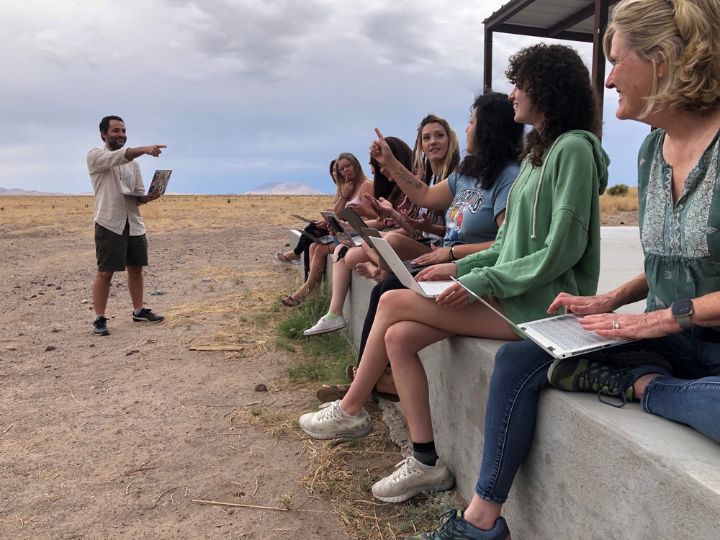


West Texas is known for majestic mountains, spectacular sunsets and vaunted vistas. It’s where the stars at night are big and bright. And nestled in the heart of it all is Marfa, a thriving arts town and the backdrop for one of the University of Houston School of Art’s newest graduate courses.
But it’s not what you think. This is a course in digital art, rather than traditional art, for the next generation of artists.
“We’re teaching them the basics of creative computer coding, so once students get good at it, they have the skills and confidence to offer NFTs,” said David Politzer, associate professor of photography and digital media in UH’s Kathrine G. McGovern College of the Arts.
An NFT, or non-fungible token, is a contract that proves ownership of a digital asset. It cannot be replicated or reproduced, but it can be sold or traded, sometimes for a hefty price. And it’s all the rage on the internet.
“It’s so new and there are limited editions of them out there. Everybody wants one and they compete for it,” said Daniel Calderon, who earned a Master of Fine Arts from UH and co-founded the class with Politzer. “The scarcity plays a role so the price just skyrockets.”
This month, Politzer and Calderon are spending two weeks in the West Texas desert, 600 miles from the UH campus, giving eight graduate students the tools to help them navigate, and hopefully succeed in, an ever-evolving digital world.
“The town’s infrastructure for the arts has built up around it,” said Politzer. “There’s a wonderful art scene, a lot of artists have settled there including former instructors and alumni of the School of Art.”
To help pay for their vision, Politzer and Calderon secured a generous donation from Art Blocks, a Marfa-based platform started by Calderon’s brother that is dedicated to generative artwork and the blockchain for hosting computer coded creations.
“We call it ‘generative art’ because it’s a system where the code is basically an algorithm that produces an image as output,” said Calderon. “And each time the algorithm runs, the output is slightly different.”
The artists may have a vision for what they want to create, but the randomness of the algorithm makes each work unique and ultimately more valuable.
“It’s kind of like a gumball machine, every minted NFT is a surprise,” said Calderon. “The first one could be a field with blue sky and green grass, but the next generation could be a red sky and the grass is orange. It gets really creative and that variation plays a big role.”
Politzer and Calderon hope their students draw inspiration from their surroundings, which includes a tract of land owned by École Des Beaux Arts, an art school in Nantes, France, that has partnered with the UH School of Art for several years. It’s where the students will push themselves creatively like never before.
“These are students who are confident in painting, sculpture, photography and graphic design, but there’s a real hunger and desire to cross that comfort threshold of using computer code to make their work,” Politzer said. “It’s a different way of thinking.”
Ultimately it will be up to the student to decide what to do with their newfound digital skills.
“There is a passion and desire to pursue this without the appeal of a huge financial return,” said Calderon. “It’s just a new set of tools, like a new kind of camera or new kind of pencil. But the possibility of monetizing their work is there.”
“The enthusiasm we’ve seen from the student community and from the Houston art community and even abroad shows that this idea has legs,” Politzer said.